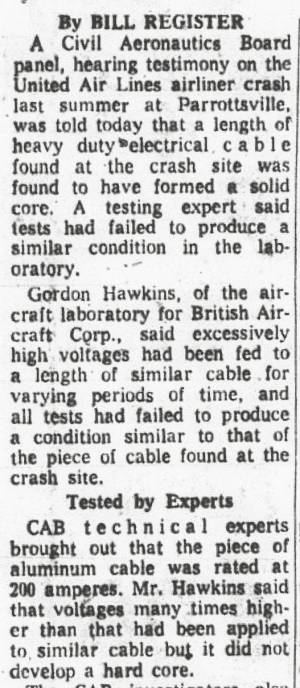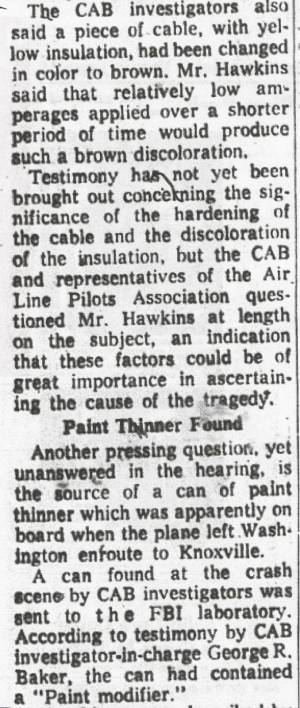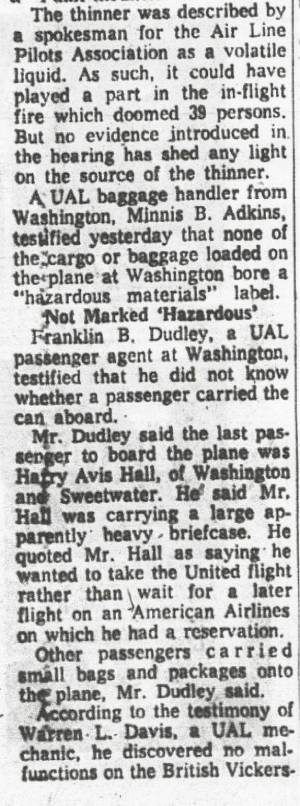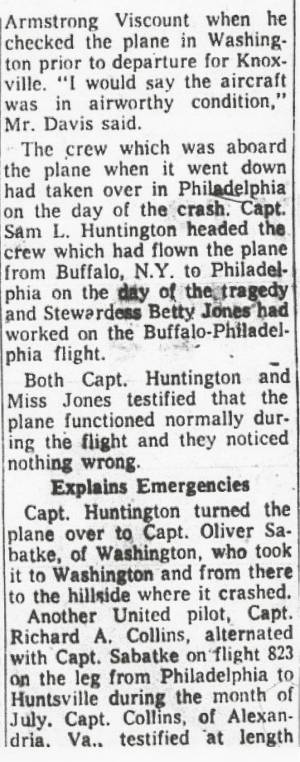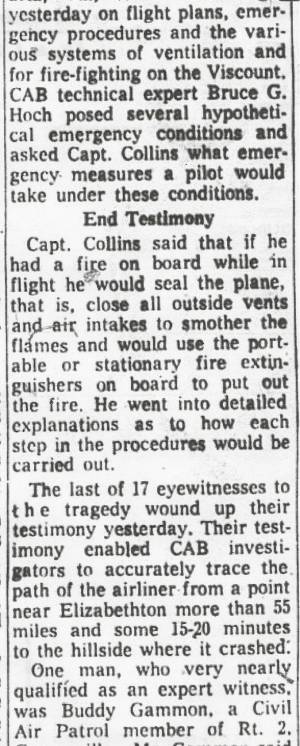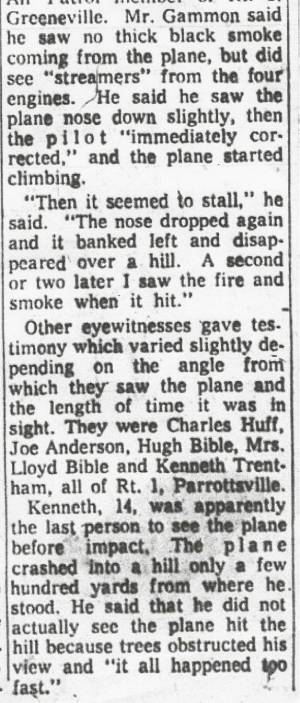A Can Of Paint Modifier Part III
From Civil Aeronautics Board Aircraft Accident Report Page Nine: Another source of flammable fluid known to have been aboard the aircraft was a one-gallon can containing a commercial paint modifier. This can was recovered in the wreckage area, crushed with no evidence of fire damage to either the can or its paper wrapping.
I recently came across the above article while searching microfilm at the East Tennessee State University Library in Johnson City, Tennessee in late November 2014.
The piece of cable mentioned in the opening of the article is very interesting and is deserving of more consideration in the future.
As the title I have given to this new page suggests, the can of paint modifier has reared its head once again.
A United Airlines baggage handler, Minnis B. Adkins, testified at the public hearing in Knoxville, that no cargo or baggage loaded in Washington was labelled hazardous.
We know that author Robert Serling mentioned a can of paint thinner as being listed on the aircraft's cargo manifest. If that was the case, then why was it not labeled as hazardous material?
Flight 823 originated in Philadelphia, so it stands to reason that passengers who boarded in Philadelphia, plus luggage and baggage, would have been on the aircraft during the stopover in Washington, D.C. Was it Standard Operating Procedure for a baggage handler in Washington (Mr. Adkins) to know what was loaded on the plane in Philadelphia?
Even if it was not Mr. Adkins' job to inspect the cargo hold for cargo previously loaded in Philadelphia; doesn't it stand to reason, that an official cargo manifest (as mentioned in Serling's book) would have been used during testimony in Knoxville in order to make mention, and to prove, that the can of paint thinner, presumably marked “hazardous” would have been loaded, somewhere along the line, on board the aircraft?
In my opinion, a cargo manifest that mentioned the existence of a can of paint thinner would have precluded the need for any testimony at the Knoxville hearing that hazardous material had been on board Flight 823.
We now know that a can of paint thinner eventually wound up in a Federal Bureau of Investigation laboratory and we also know, after reading the article, that several different witnesses gave testimony with regard to the can. According to the Knoxville News-Sentinel article, there was no testimony given that conclusively placed the paint thinner as being on the aircraft.
One possibility that has weighed on my mind from the very beginning: Could the paint thinner can have been on the ground prior to the crash? Was it merely an insignificant piece of litter? Could the flammable material in the can have once been used by the land owner to start fire to a brush pile?
I am continuing to search for clues about the paint thinner can and hope to one day come across transcripts of the hearing that deal with it or even the FBI lab report that can better describe the physical condition of the can. Better yet, a cargo manifest that lists a “can of paint modifier”.



